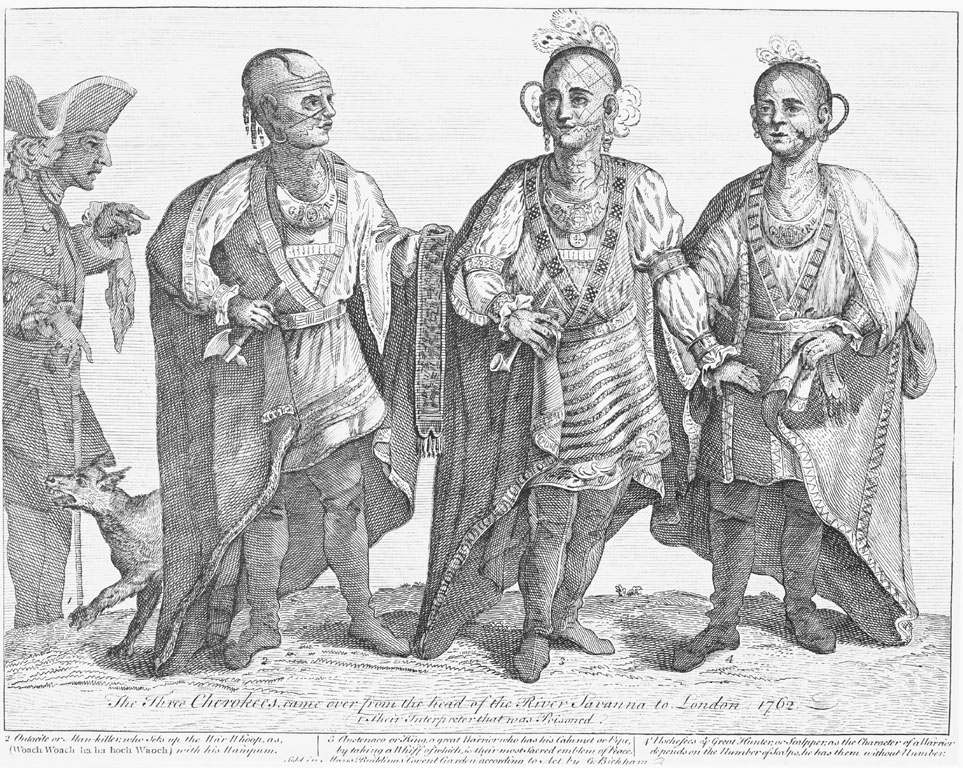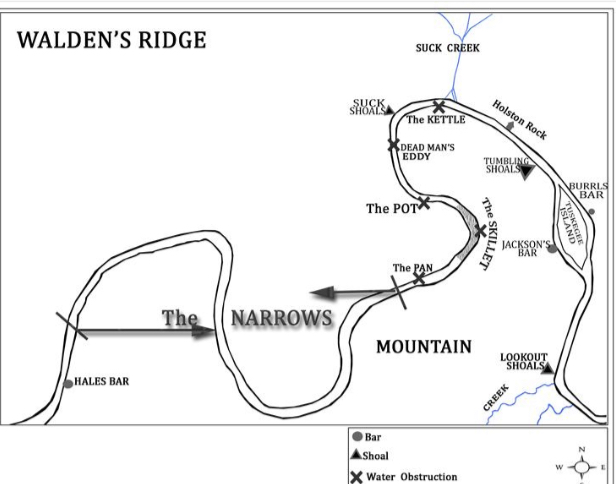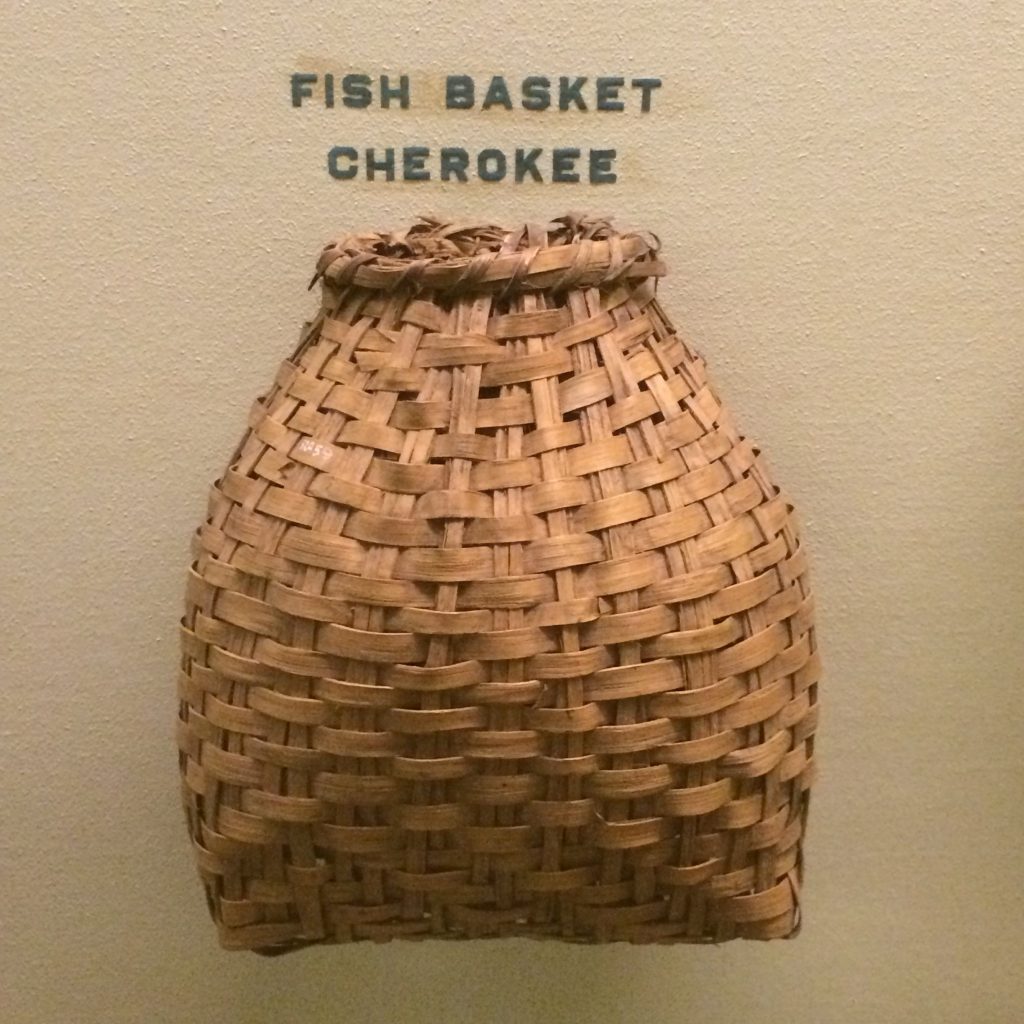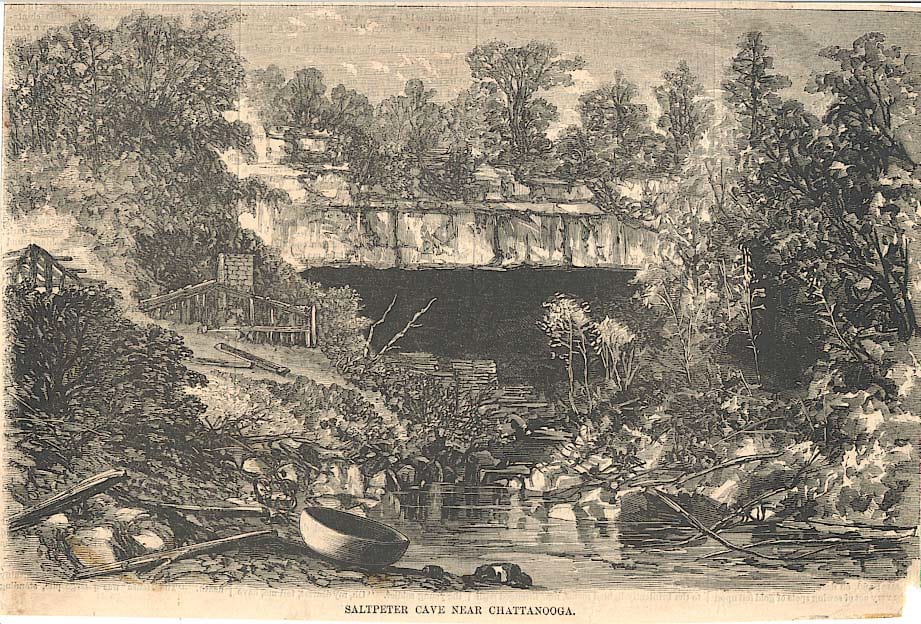
The Ancient Landscape of Southeast Tennessee
(Image: Sketch of three Cherokee leaders by Henry Timberlake, 1762)
The Chattanooga region of Southeast Tennessee can be experienced through so many lenses, but the historical lens is one of the most captivating. Once you learn the fascinating history of the landscape, it can be difficult to stay put in the 21st century, easy to get caught up toggling between the ages.
For instance, try shaking this image from your mind next time you drive by Cameron Hill in downtown Chattanooga: According to author Zella Armstrong in The History of Hamilton County and Chattanooga, Tennessee, a grove of old-growth trees once covered Cameron Hill, now home to the corporate offices of BlueCross BlueShield of Tennessee. Those ancient trees were cut during the Civil War in order to provide fuel for campfires – but just imagine them, giant chestnut and oak trees towering above the Tennessee River on that hill.
It’s an image that can almost become an ache, a longing for what was and is no longer.
Put on your historical lens and step back further in time to the 1700s, when most of the land in East Tennessee was claimed by the Cherokee Nation – and the Tennessee River was a much wilder version of itself.

This historical lens will also bring to life one of history’s most notorious Native American leaders in the fight against white settlement, Dragging Canoe, who lived from 1738 to 1792 in villages throughout the region.
Dragging Canoe was a warrior who fought to defend his homeland in the Southeast against pioneer encroachment. Descriptions of this man vary, depending upon who is writing about him and in what century: “Cherokee leader,” “warrior chief” and “savage” are often used. What is known about Dragging Canoe is that he was a force to be reckoned with during the days of western expansion.
Fear reigned among both cultures in the 1700s. For the Cherokee and other Native Americans, it was the fear of having ancestral lands stolen and a way of life destroyed. For the settlers, it was fear of retribution for encroaching and settling on Native American lands. Our mountains and valleys are soaked with the blood of the many vicious battles that took place between settlers and Dragging Canoe’s forces.
Dragging Canoe is said to have grown up in the Cherokee Overhill town of Great Island Town (also called Mialaquo) in East Tennessee. Never heard of it? That’s because this prehistoric village in Monroe County is now submerged by Tellico Lake. To see the former site of Great Island Town, look north from the U.S. 411 bridge on the Little Tennessee River in Vonore, Tenn., or look west from Wildcat Point, a cliff on the eastern bank of the river.
In 1967, the Tennessee Valley Authority began construction on Tellico Dam just above the mouth of the Little Tennessee River, creating Tellico Lake and effectively flooding all of the original Cherokee village sites along the Little Tennessee River. Before the flooding, however, the University of Tennessee conducted extensive archaeological excavations. The Frank H. McClung Museum at the UT Knoxville contains hundreds of Cherokee artifacts obtained from these and other excavations from the Tennessee Valley.
After the 1775 Henderson Treaty – one of many treaties that forced the Cherokee people off their homelands – Dragging Canoe led a group of Cherokee people from Great Island Town to land along South Chickamauga Creek (near Brainerd Road). They established 11 towns in an effort to insulate themselves from the encroachment of settlers.
In 1782, Col. John Sevier, along with 200 mounted men, burned all 11 villages while the Cherokee warriors were away. Legend has it that Sevier and his men gathered all of the belongings from the villages, paddled up the Tennessee River toward Knoxville, and stopped at the mouth of a creek in what is today Sale Creek, Tenn., to auction off all of their plunder.

Following this event, Dragging Canoe and his people, known as the Chickamauga Cherokees, moved further down the Tennessee River, establishing what became known as the Five Lower Towns: Running Water Town (now Whiteside); Nickajack (near Nickajack Cave); Long Island Town (on the Tennessee River); Crow Town (at the mouth of Crow Creek); and Lookout Mountain Town (near the current Trenton, Ga.).

Dragging Canoe died at Running Water Town in February 1792, and some locals say his grave is submerged by Nickajack Resevoir. His handpicked successor, John Watts, assumed control of the Lower Towns. When the national government of the Cherokee Nation was organized, the first three persons to hold the office of principal chief of the Cherokee Nation – Little Turkey, Black Fox and Pathkiller – had previously served as warriors under Dragging Canoe.
Dragging Canoe’s life and fight for the Cherokee people’s homeland took place just more than 200 years ago in places where today we grocery shop, attend school, play in parks and live our lives. This landscape has not always been ours.
Further Reading: J. Leonard Raulston and James W. Livingood offer collected stories about the historical and cultural heritage of the region in the book Sequatchie: A Story of the Southern Cumberlands.
Article by Jenni Veal, for Nooga.com








